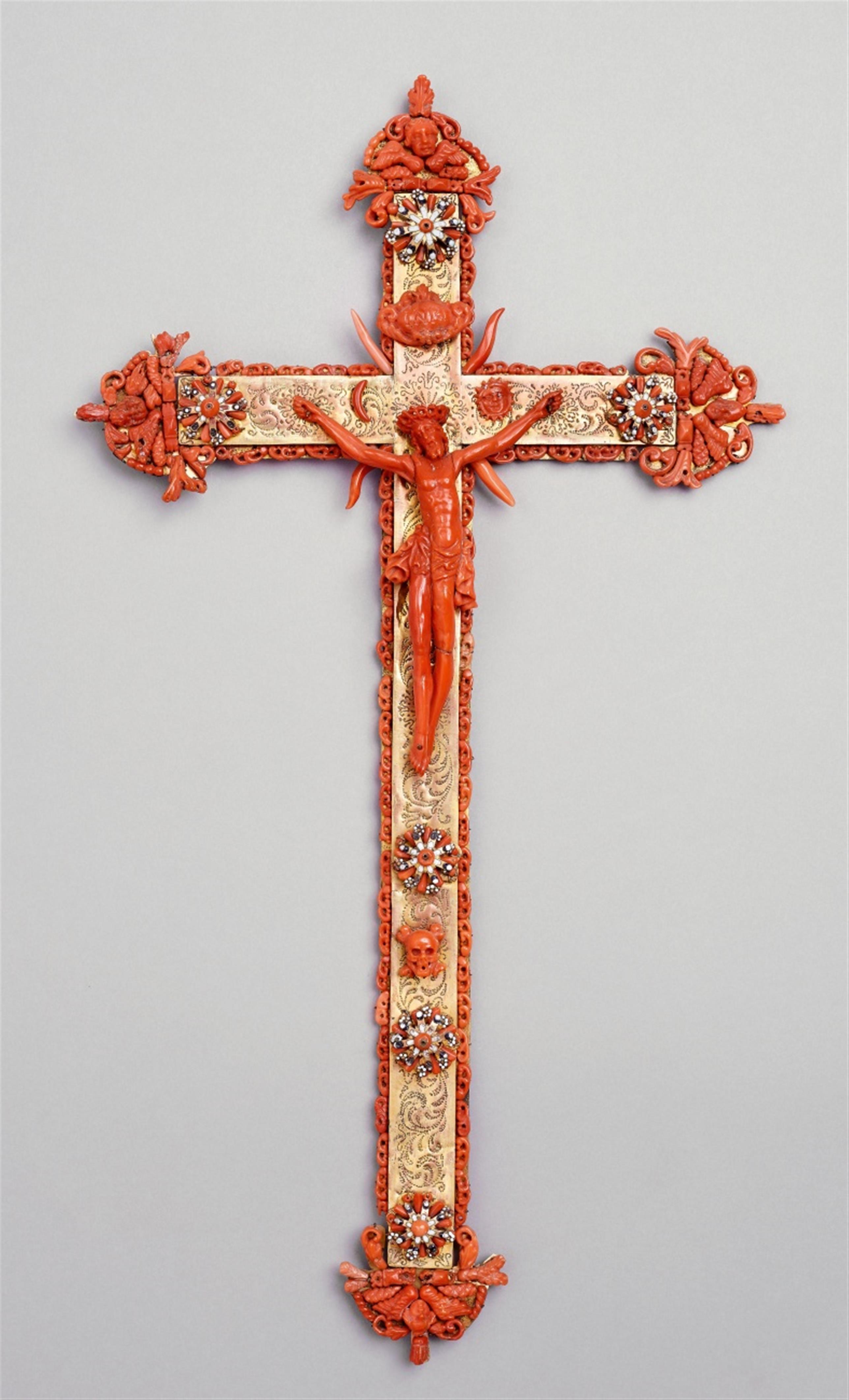A Trapani coral cross
Engraved and gilded copper, white email champlevé and email ronde bosse, carved red coral. Cross with a figure of Christ assembled from several pieces of carved coral, crucified with three nails, wearing the crown of thorns beneath the INRI plaque. To his right and left we see the sun and moon and four carved rays in the spandrels. The beams of the cross with floral engravings and framed by tiny pieces of coral, the terminals with rosette appliques and three further rosettes beneath his feet alongside a skull. The edges of the terminals with winged angel's heads amidst vines and beaded mouldings. Localised wear to the gilding. H 42.2, W 23 cm.
Sicily, late 17th/early 18th C.
The story of the coral carving workshops of Trapani began long before the recorded discovery of the first great coral mines in the 14th century, when Jewish families from the Maghreb came to Sicily to make a living cleaning and processing the coral found there by local fishermen. In their works, small coral sculptures, cabochons, and branches are inserted into copper panels through pre-drilled holes. The small pieces of coral are affixed with a special glue made from pitch, wax, and fabric and then covered on the reverse with another copper panel, which is often engraved and decorated. The growing demand for these works throughout the 17th century led the artisans to change their technique slightly, and the coral sculptures were then attached to the plaques with copper wire, as seen in this work. All of the appliques, plaques, sculptures, mirror frames, and writing utensils made in the workshops of Trapani display the same design conventions, determined on the one hand by the reduced polychromy of the materials (red, white, and gold) and by the density of the details on the other. The resulting effect is akin to that of an Oriental carpet. By the end of the 18th century, almost all of the coral reefs had been thoroughly depleted, and the industry at Trapani disappeared.
Provenance
Private collection, Copenhagen.

